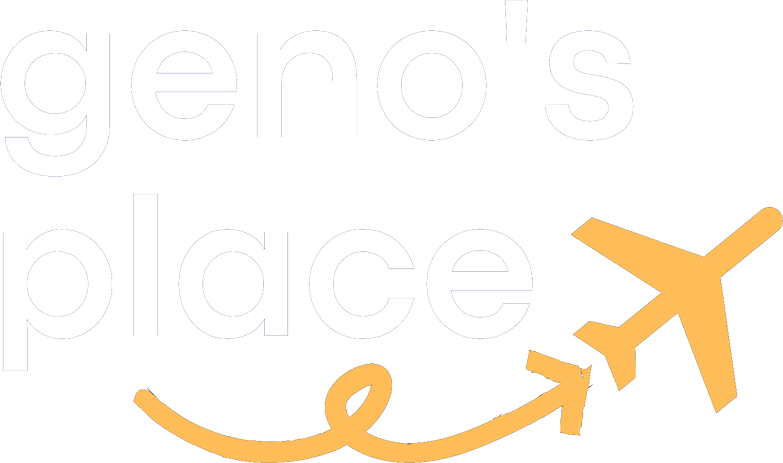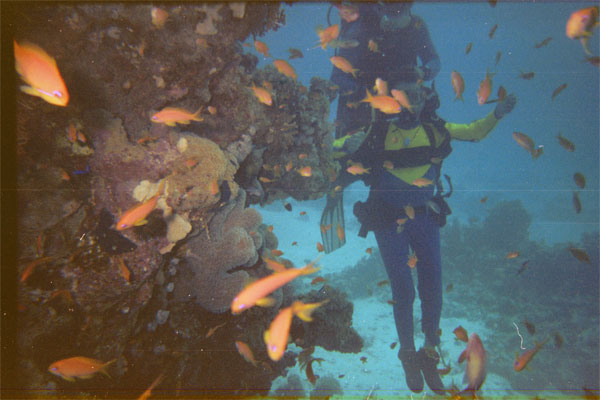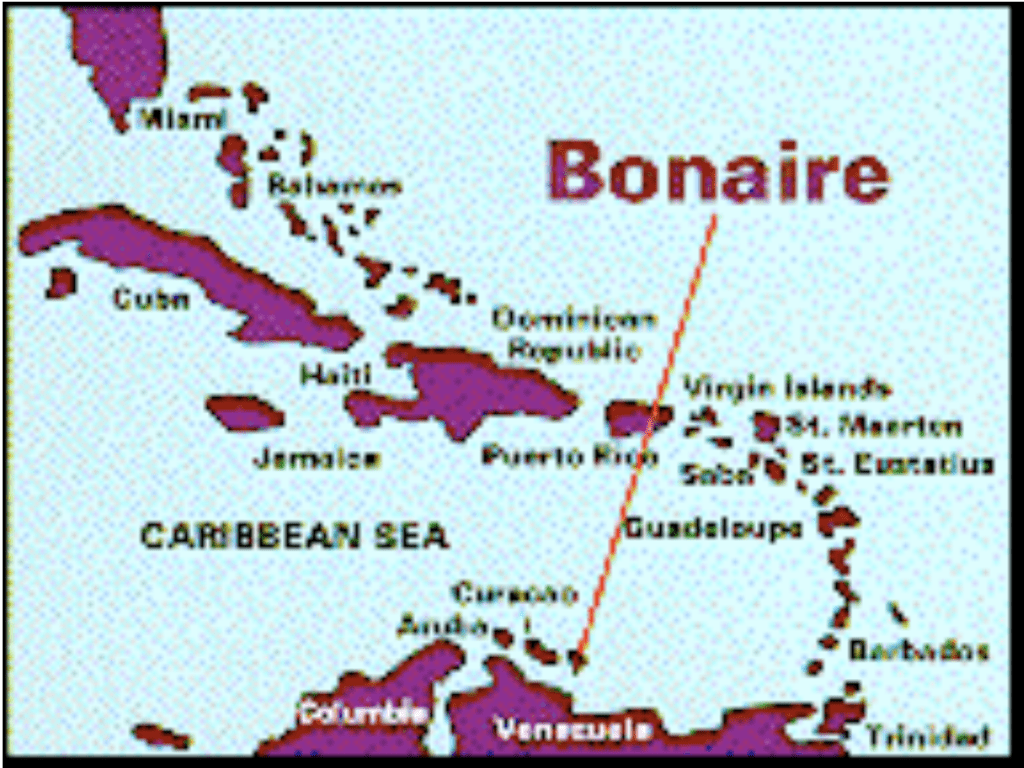
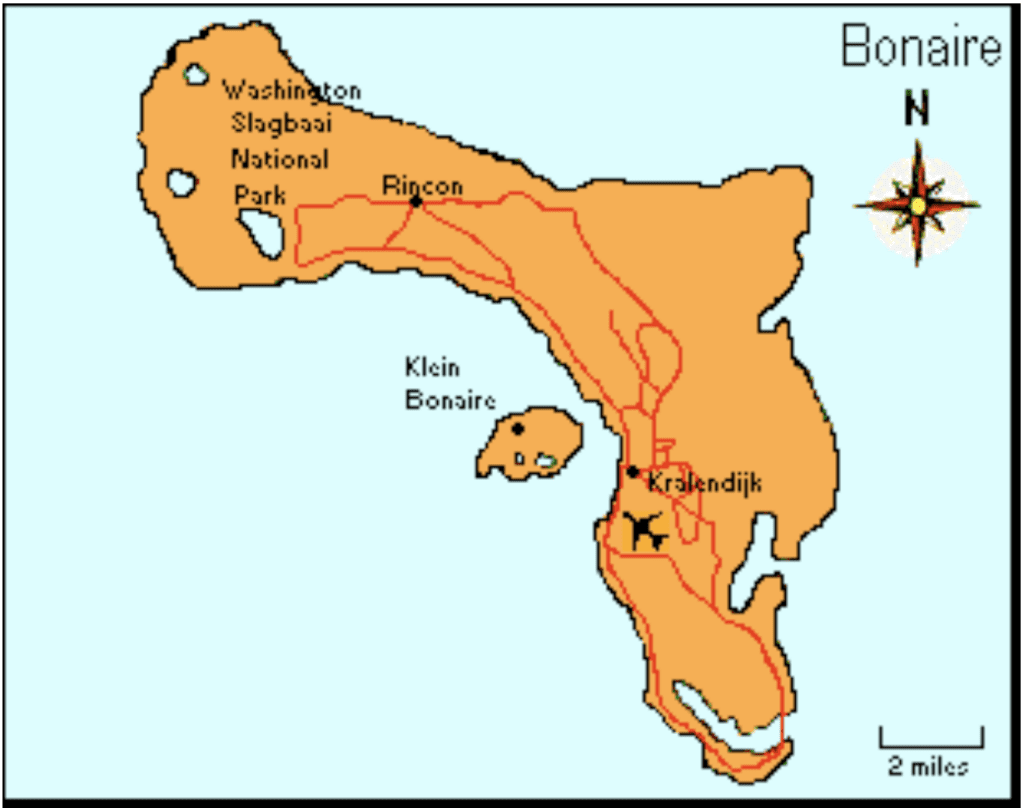
As a C-5 quadriplegic (paralyzed from the shoulders down) and outdoor enthusiast I have had ample opportunity to experiment with disability related equipment or, as it is now called, assistive technology (AT). Whether it is skydiving, skiing, cliff climbing or trekking in the Himalayas, each event requires some sort of AT. Scuba diving is an equipment intensive sport that provides a unique challenge to those of us with disabilities that have the urge to submerge.
I celebrated my newly acquired diver certification by booking a dive trip in the Dutch Caribbean. I stayed at the wheelchair accessible Flamingo Resort on the island of Bonaire about 50 miles off the coast of Venezuela. Bonaire is a very small island. The best diving is on the west or leeward side of the island. There, divers enjoy very calm water.
The face mask was my first introduction to Scuba AT. I couldn’t wear a mask over my eye glasses so I borrowed a mask from a friend who had her mask customized with prescription lenses. Our prescriptions were very similar. This simple accommodation greatly enhanced an already wonderful experience.
I also wore a Buoyancy Compensator (BC) vest; another critical element in the scuba ensemble. Most people wear a weight belt but I needed precise positioning of weights. After significant trial and error, I settled on a weight integrated vest. This vest, sometimes just called a BC, has pockets that can be filled with lead weights. I filled each of the front 2 pockets with 3 2-pound weights. A 1-pound ankle weight helped me maintain a perfect angle to the reef. Without this AT I would have floated at a very uncomfortable angle.
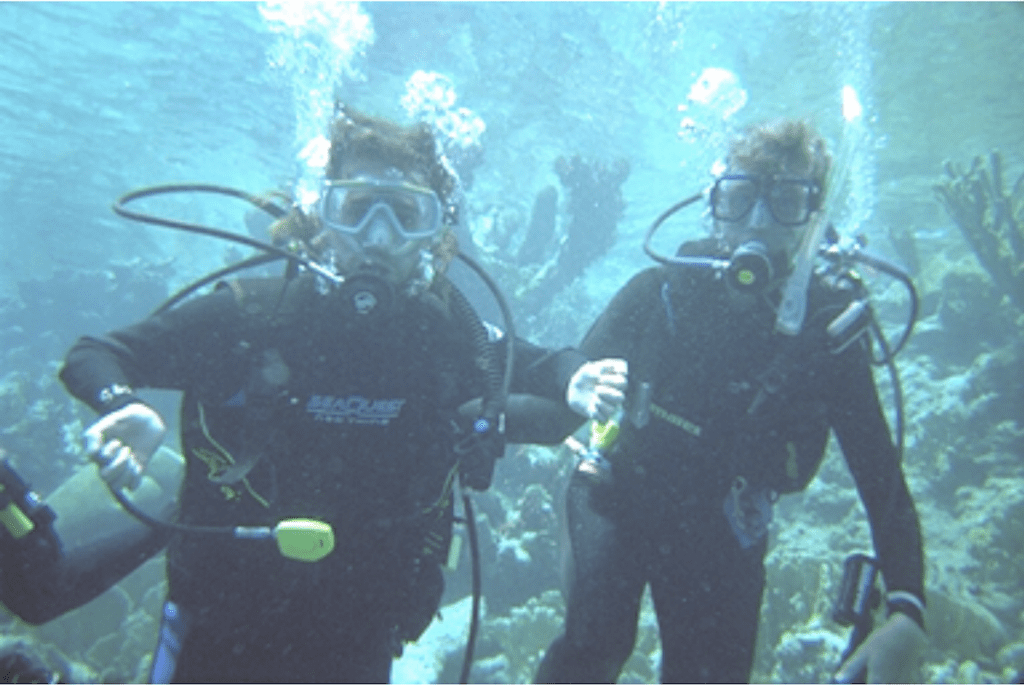
The most important AT device I used was a communication board. We needed a way to communicate underwater but how ? I couldn’t use hand signals or even point. After some trial and error we came up with a great solution. One of my dive buddies, Mindy, wrote the words fish, coral, wreck, closer, ID, SPG, compass, cold, and safety stop on a slate. While diving, if I wanted to get Mindy’s attention, I would grunt. She would pull the slate around where we could both see it. Then she would point at a word. If it wasn’t the word I wanted I shook my head no. Mindy was incredibly intuitive and rarely had to point to more than one word. For example; if we were in area particularly rich in coral, I would grunt once. Mindy pointed to the word coral to verify that is what I wanted to see. If I shook my head yes and grunted again Mindy pointed to the word “closer” to verify I wanted to get a very close view of the coral while at the same time, maintaining a safe distance to avoid damaging these delicate creatures. If I appeared to find a particular coral fascinating I would grunt again. Mindy pointed to “ID” to verify I wanted her to identify the coral for me. I shook my head yes and she turned the slate over to write down the name of the coral. At the end of the day I had a slate full of names which I copied into my log book.
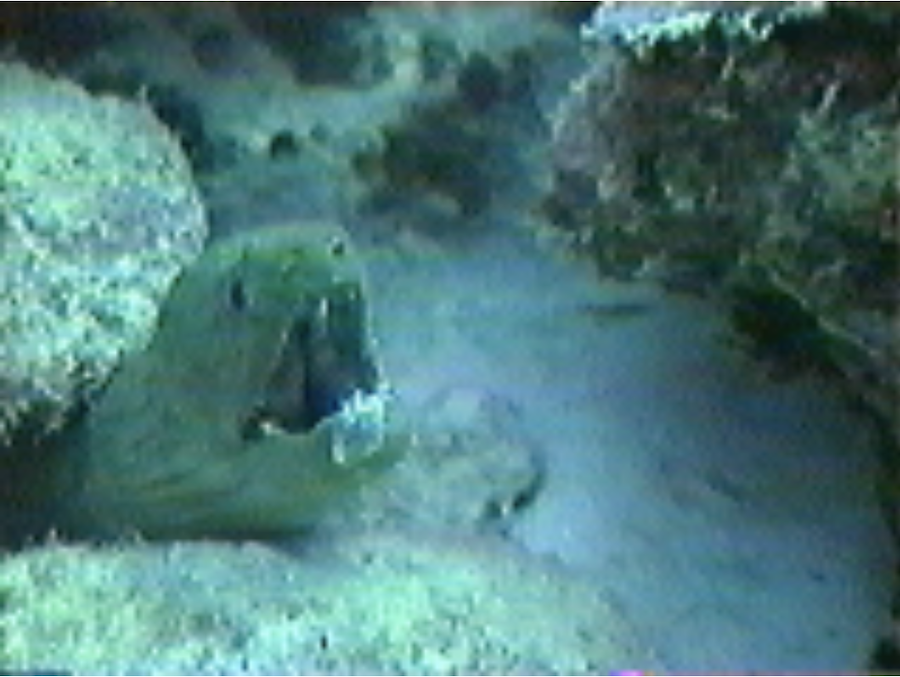
Most fish and coral can be seen at a depths less than 40 feet. Sunken ships are usually deeper. Artificial reefs, such as sunken oil derricks are deep as well.
My diving experience was great and since 2/3 of the earth is covered with water I believe I will never run out of dive sites to visit.
Night diving required additional AT. Since I can’t use my hands to hold a flashlight I used two underwater flashlights that clipped on either side of my face mask strap. That system worked surprisingly well and allowed me to see some marine life that is well hidden during the day.
